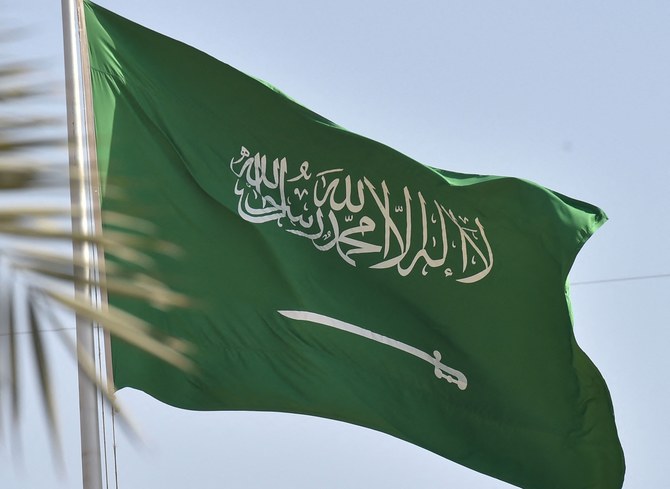
- ARAB NEWS
- 11 Jul 2025

Every brand identity relies on marketing goals to create an emotional connection with society.
When I come across the brand identity of a government or private entity, I am filled with curiosity and a desire to decipher its symbolism and comprehend its significance.
Of all such symbols, I firmly believe the identity of Saudi Arabia’s Founding Day is the most exquisite and profound, with the power to resonate with every citizen’s conscience.
As Saudis commemorate this special day, which has connected them with their national heritage for almost 300 years, let us take a moment to reflect on its symbols, their significance, and the profound connections that have been established since the founding of the First Saudi State and its historical capital, Diriyah.
The Kingdom’s flag symbolizes the glories and heroism of the Saudi people, led by their imams, since their flag was first raised in 1727. It represents our Saudi national identity, with its green color and testimony of monotheism. The flag is a true reflection of our Arab heritage.
To honor this historical depth, a royal order was issued to designate March 11 as a special day to honor and celebrate the Saudi flag. It commemorates that moment when the flag flew for the first time after the unification of the Arabian Peninsula, and invokes a sense of pride and belonging that strengthens the emotional connection between generations.
Within the identity of Founding Day, I am also drawn to the image of Arabian horses. They represent the bravery and courage of the imams of the First Saudi State.
Imam Saud bin Abdulaziz, the third imam of the First Saudi State, owned about 1,400 thoroughbred horses. His stable was one of the largest royal stables of the 18th century. His horses, stabled across Diriyah and Al-Ahsa, were known for their beauty and pure Arabian bloodlines.
The Imam had specific rules for handling the horses and paid generously to acquire the best breeds. He once spent £600 ($755), a hefty sum at the time, for a single mare. Considering he had 600 knights, carefully chosen from across the Arabian Peninsula, to handle these horses, we have an idea of the magnitude of his stables.
Jacob Burckhardt, a famous 18th-century European orientalist who visited the Arabian Peninsula, wrote that Imam Saud always rode his favorite mare, Kreaah, during military campaigns and the horse became famous throughout Arabia.
The Al-Majlis, a meeting place where community members gather to sit together and discuss local events and issues, exchange news, receive guests, socialize and be entertained, is another significant symbol of the Founding Day identity. It represents the idea of unity and harmony within society and culture, and plays a prominent role in the governance of Saudi Arabia.
The tradition of Al-Majlis in Saudi Arabia dates back to the founder of the First Saudi State, Imam Mohammed bin Saud, who established several Majalis (councils) in Diriyah. One of these councils was in Souq Al-Mawsim (Seasonal Market) the Palace Majlis, during sessions of which the participants addressed public, scientific and social issues, and discussed ways to meet the needs of the people. Imam Mohammed recognized the importance of the Al-Majlis and allocated a dedicated space for it in Salwa Palace, demonstrating his commitment to it.
The topics addressed during Majlis were not limited to politics and science. For example, an economic Majlis took place during seasonal markets. The imam hosted a daily Majlis at sunrise during which community members gathered to discuss the commercial activity of the First Saudi State and trade; goods were imported from several countries and regions outside the Arabian Peninsula, including Persia, Iraq and the Levant.
The economic Majlis also had an educational aspect. It had separate sections for men and women, and the loud voices of those with strong purchasing power could be heard buying and selling.
In Arabic script inspired by Saudi manuscripts from Diriyah, the identity of Founding Day is further revealed. Diriyah was renowned for its beautiful Saudi manuscripts and Arabic calligraphy, which received the full support of the imams.
It is a place that has always been a source of inspiration, knowledge and culture, and many talented calligraphers emerged from there, leaving their mark in decorations, writing and copying. They were influenced by calligraphy schools and the decorative arts across the Arabian Peninsula, and in turn they influenced others in the region and beyond.
The industry in Diriyah devoted to the manufacture of paper and ink became renowned thanks to the generous support provided by imams to the calligraphers, including their encouragement of healthy competition and the pursuit of knowledge.
Men and women alike played a role in spreading awareness of Saudi manuscripts, with some women even competing with men for prominence in the art form. Most notably, women from the Saudi royal family and Diriyah made significant contributions that helped to enrich knowledge and revive the art of writing.
Burckhardt described the library of Imam Saud bin Abdulaziz as “the richest library at that time in Saudi Arabian manuscripts, and it is the library of the imams in Diriyah, from the founding imam, Mohammed bin Saud, and the imams after him.”